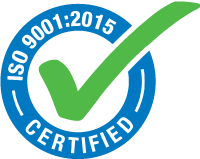氨基酸阳离子原料肽同时电分离:自由肽浓度对迁移速率、选择性和相对能量损耗的影响
Published: 2016-01-28
Keyword: Cell-Penetrating Peptides,多肽,抗菌肽,抑制剂
关键词: 超滤膜的电透析,肽浓度
出版时间:2015-11 Separation and Purification Technology 157 (2016) 53-59.
该研究主要测试在超滤膜电透析(EDUF)过程中原料液中起始肽浓度(0.5%, 1%, 2% and 4% (w/v)对迁移速率、阳离子和阴离子的原则性和电透析参数的影响。
结果表明原料液中起始肽浓度以线性的方式增长(从0.5%增加到4%)和总的分离速率影响着两个回收间中RCA- (天冬氨酸、谷氨酸和组氨酸) 和 RCC+ (主要是天冬氨酸),或者是含有这些氨基酸的肽。在原料液中起始肽浓度为4%时,阳离子和阴离子间的RCA- 和RCC+最高的迁移速率分别是每小时16.2 g/m2 h and 7.8 g/m2。此外,相对能量消耗也随着原料液中起始肽浓度的增加而下降,在0.5%浓度的起始肽,相对能量消耗为17.4 Wh/g,在4%浓度的起始肽,相对能量消耗为3.53 Wh/g。此外,膜的完整性和物化特性在原料液中起始肽浓度范围内不受影响。
该研究的主要发现是首次通过超滤膜电透析(EDUF)研究了原料液中起始肽浓度对迁移速率、阳离子和阴离子的原则性和电透析参数的影响。

Configuration of the electrodialysis with ultrafiltration membrane cell. AEM: anion-exchange membrane, CEM: cation-exchange membrane, UFM: ultrafiltration
membrane and V: voltmeter connected to silver coated
超滤膜单元的电透析结构 AEM:阴离子交换膜;CEM:阳离子交换膜;UFM: 超滤膜; V:链接到修饰银的电压器
Key words: Electrodialysis with ultrafiltration membrane, Peptide concentration
Published time: 2015-11 Separation and Purification Technology 157 (2016) 53-59.
The present work aimed to determine the effect of initial peptide concentration (0.5%, 1%, 2% and 4% (w/v) in feed solution during electrodialysis with ultrafiltration membranes (EDUF) on migration rate and selectivity of both anionic and cationic peptides as well as on electrodialytic parameters.
The results showed that increasing the peptide concentration in the feed solution from 0.5% to 4% increased, in a linear way, the total separation rate and affected the selectivity of free amino acids in both recovery compartments RCA- (Asp, Glu and His) and RCC+ (Arg mainly) and/or peptides containing these amino acids. The highest migration rates observed at 4% were 16.2 g/m2 h and 7.8 g/m2 h for the cationic and anionic compartments respectively. Furthermore, the relative energy consumption decreased with increasing feed solution concentration from 17.4 Wh/g at 0.5% concentration to 3.53 Wh/g at 4% concentration. In addition, membrane integrity and physicochemical properties were not affected in the range of peptide concentration tested.
The main finding of this study is that it was the first time that the impact of feed peptide concentration on migration, selectivity and relative energy consumption is demonstrated in EDUF.



 关注我们
关注我们

